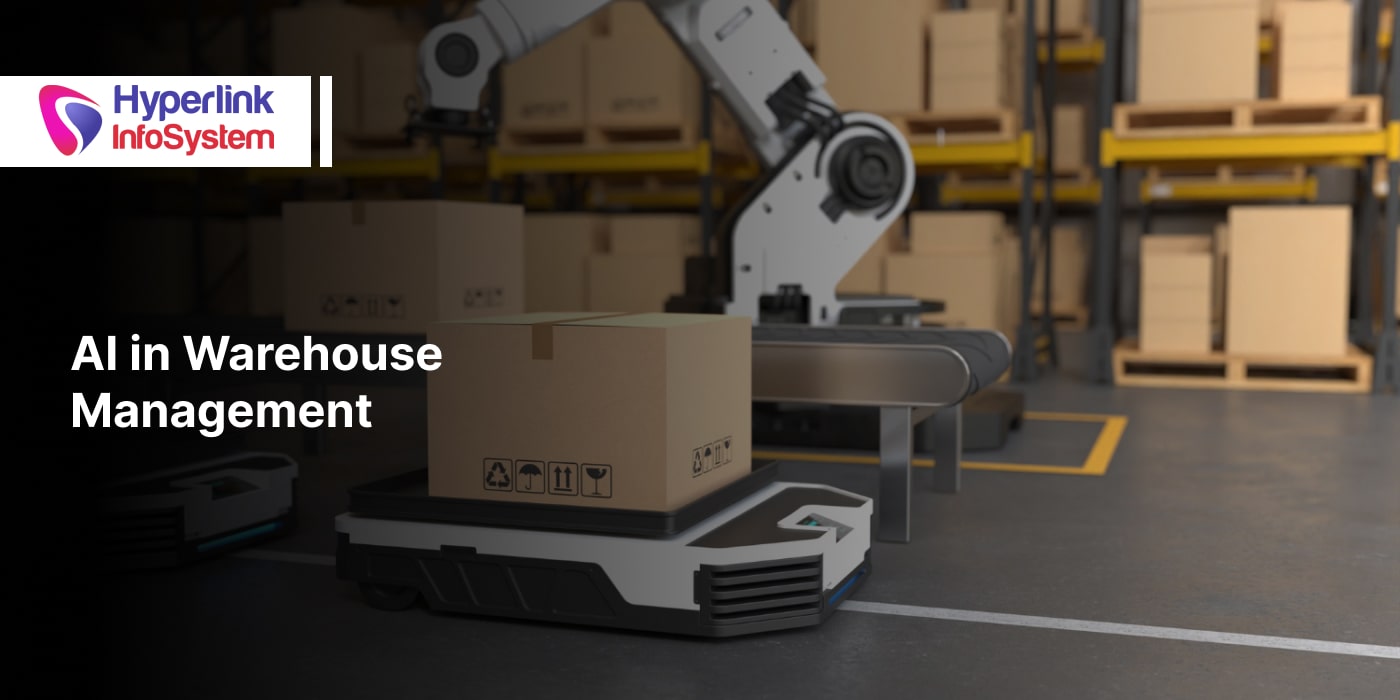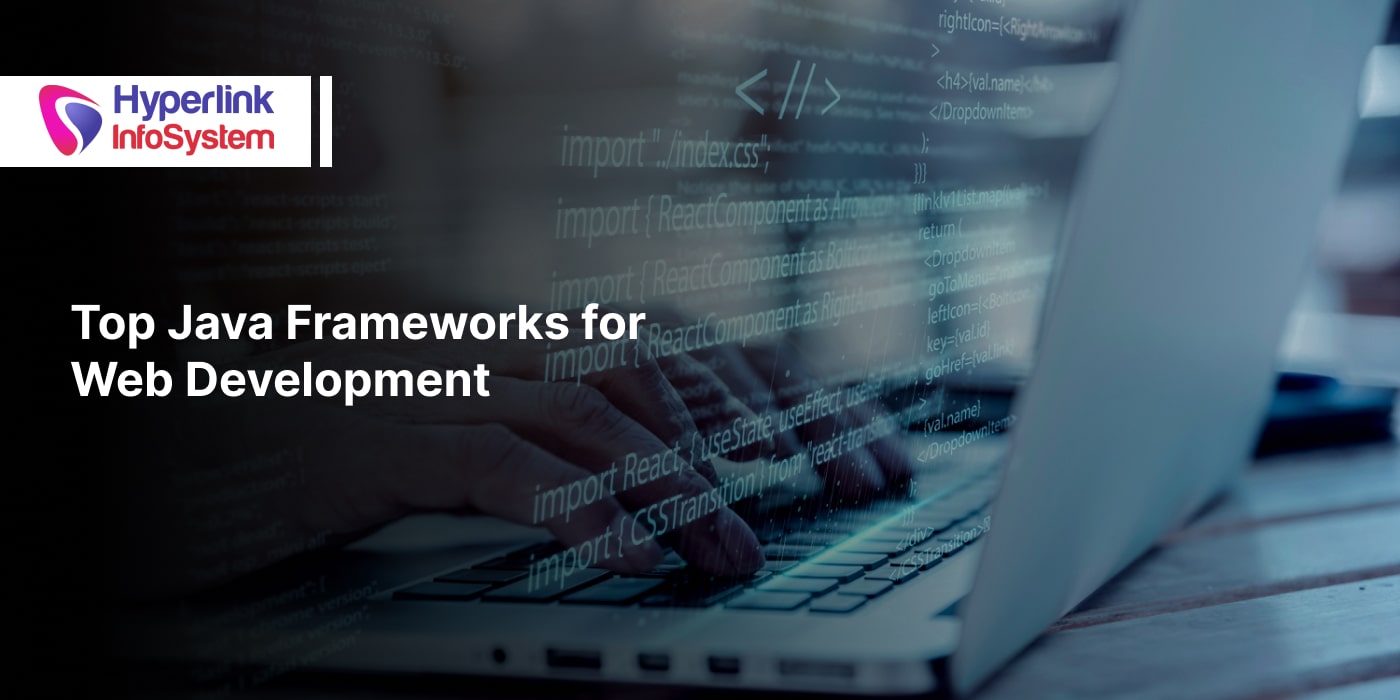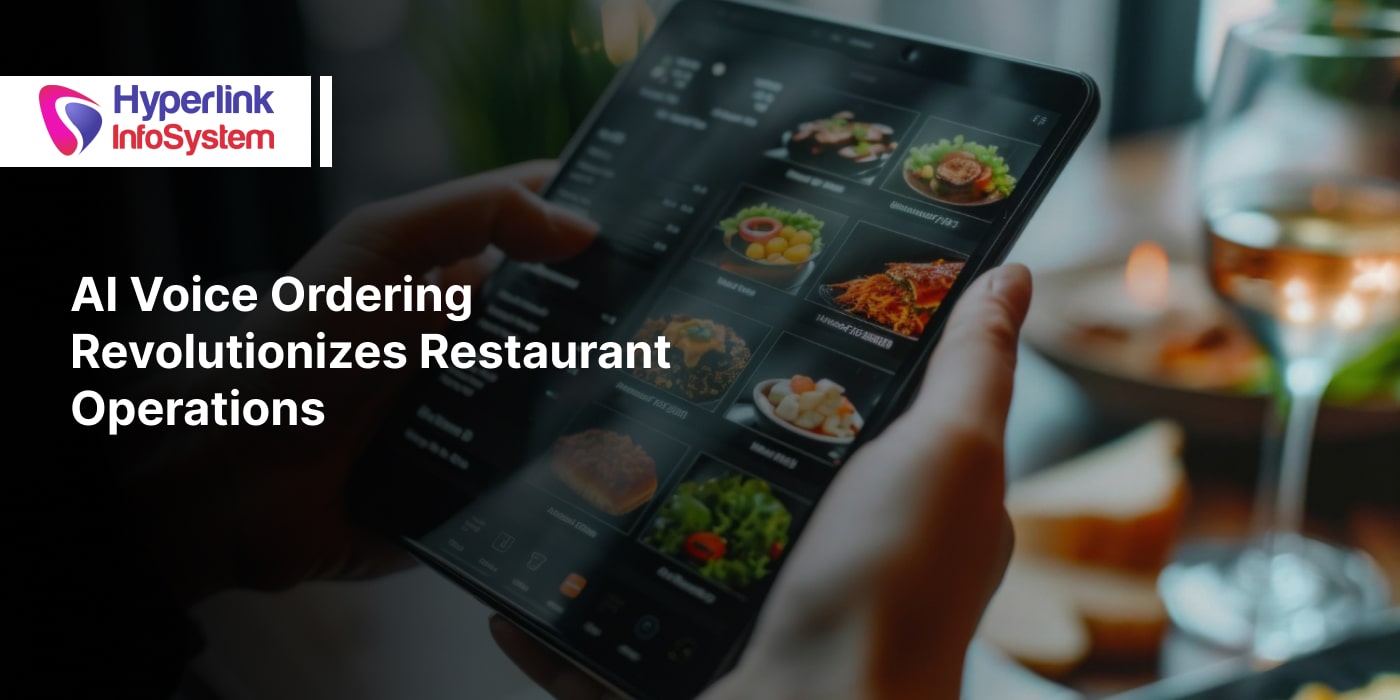AI in Warehouse Management: Challenges, Benefits, Costs
Sep 2025

Have you ever stepped into a traditional warehouse? It is a bustling environment filled with forklifts, workers, quality and inventory control specialists, maintenance technicians, and others relying on paper-based records. Everyone is extremely busy, and nothing progresses without the approval of supervisors and managers. This model has existed for decades, and things worked well until the rise of e-commerce.
Rising customer expectations, demands for same-day delivery, and the complexities of global supply chains have compelled companies to streamline their warehouse management. Businesses that continue to rely on outdated warehouse management systems and paper-based records are unable to meet these heightened expectations.
Without real-time data visibility, even minor hiccups, such as misplaced goods or shipments delayed during transit, can paralyze operations. Implementing AI in warehouse management is the solution, but not everyone is willing to take the plunge. More than 80% of warehouses do not have any automation systems in place. Out of the remaining 20% that do use automation, only 5% use sophisticated automation equipment and solutions.
Modern warehouses are not merely storage facilities; they serve as strategic hubs within the supply chain, playing a crucial role in ensuring customer satisfaction, cost efficiency, and operational resilience. With the growth of e-commerce, companies face immense pressure to deliver on time, maintain optimal inventory levels, and respond effectively to dynamic market fluctuations.
Warehouse management systems powered by AI, IoT, AR, ML, autonomous mobile robots, and other advanced technologies will always be superior to those rooted in the 1990s. However, many businesses still avoid adopting AI due to various factors, including resistance to change, infrastructure costs, regulatory challenges, reliance on manual systems, and more.
This blog will explore various aspects of AI in warehouse management, including costs, challenges, benefits, and more. Let’s get started.
What Is AI in Warehouse Management?
In simple terms, AI in warehouse management refers to the use of smart technologies to optimize warehouse operations. These optimized processes operate with razor-sharp accuracy, increased efficiency, greater speed, and enhanced adaptability to changing market conditions.
Traditional supply chains, which rely heavily on manual processes and outdated systems, are ineffective for managing complex, fast-paced, and customer-centric operations.
Most importantly, AI in warehouse management enables machines and software to handle the bulk of the workload, allowing humans to concentrate on tasks that require critical decision-making and strategic development.
The AI in warehouse management is projected to grow from $6.49 billion in 2025 to $35.92 billion by 2034. Why do companies need AI in warehouse management? Technologies used in AI-powered warehouse management include machine learning, computer vision, robotics, predictive analytics, and more. Common applications of AI in warehousing include the following.
- Autonomous Mobile Robots - For picking, packing, and sorting goods in the warehouse.
- AI-Powered Inventory Systems - Predicts inventory shortages or excessive stocking.
- Computer Vision - For real-time stock tracking or conducting quality checks.
- AI-Powered Warehouse Management Systems - To optimize layouts, labor allocation, and storage.
- Predictive Analytics - For demand forecasting and supply chain planning.
Although implementing AI in warehouse management reduces human intervention, it may still be required in the following cases.
- System oversight and monitoring
- Handling exceptions such as damaged goods and irregular orders
- For tasks that require strategic decision-making, such as layout changes and choosing the right vendors.
- Intervention during system failures or edge cases.
Top AI Technologies for Effective Warehouse Management
Contrary to popular belief, AI is not a single technology used to manage warehouse operations. Instead, AI in warehouse management encompasses several technologies designed to ensure smooth operations while minimizing errors and unexpected issues. Below are some of the leading AI technologies in warehouse management.
1) Picking Robots and Autonomous Mobile Robots
- Warehouse operations involve moving numerous items, including goods, hardware, equipment, and more. Workers may risk injury or fatigue from lifting heavy objects.
- Autonomous mobile robots do not experience fatigue and can navigate the warehouse continuously. They can perform more tasks than humans with nearly zero errors.
- In addition to performing hazardous tasks such as lifting heavy objects or retrieving items from high shelves, these robots determine the most efficient route, thereby enhancing speed and productivity.
2) Predictive Maintenance
- When any machine or equipment breaks down during business hours, it’s a setback for the company. It also means that employees have to put in extra hours to catch up on the work that’s piled up.
- Sensors that are part of an IoT network gather data on temperature, vibration, pressure, and other important factors, sending alerts to the right people if something seems off.
- These sensors provide real-time data that feeds into the warehouse management system, helping teams make quick decisions.
- At the end of the day, AI evaluates whether the alert is just a false alarm or something that needs attention.
3) Smart Warehousing
- Smart warehousing is all about leveraging technology, like sensors, to effectively manage everything from inventory to staff and even the layout of the space.
- With a comprehensive view of the warehouse, AI can pinpoint the optimal spots for inventory placement, making it a breeze for workers to load and dispatch items.
- It also keeps an eye on trends and seasonal changes, sending timely alerts that help inventory managers ensure they have the right amount of stock on hand.
- Plus, with RFID tags, items can be tracked and scanned automatically, which not only speeds up inventory management but also reduces the chances of errors.
4) Computer Vision
- Robots that use computer vision cameras are able to navigate warehouses much more efficiently, avoiding bumps into shelves, workers, or goods. They operate independently, so there's no need for human intervention to guide them through complex layouts.
- Thanks to computer vision, these robots can recognize packages and items by their shape, labels, size, and other characteristics. This ensures that the right products are delivered to the correct shipping zones or loading vehicles without any delays.
- The cameras also scan barcodes or QR codes in real-time, allowing for automatic inventory updates whenever a product is moved, which means no more manual entries are necessary.
5) Natural Language Processing
- Natural language processing, or NLP for short, is a fascinating branch of AI that enables computers to grasp, interpret, and interact with human language, whether it's spoken or written. For warehouse staff, sifting through piles of paperwork can be a real drag.
- That's where NLP steps in, taking care of the heavy lifting by providing concise summaries and empowering them to make informed decisions.
- With the help of NLP-driven digital assistants, they can easily access data from warehouse management systems, get answers to their questions, and receive real-time updates on product statuses.
- No matter if the documents are scanned or digital, NLP can effortlessly read them and pull out key information like dates, prices, and consignment numbers, significantly cutting down on manual work.
6) Ingellient Forecasting and Predictive Analytics
This AI analyzes past data and trends to predict future trends and demand.
With Intelligent forecasting and predictive analytics, companies can do the following.
- Predict the inventory required for the next month.
- Plan accordingly for sales spikes or lull periods.
- Provide the ETAs to ship orders.
- Send out notifications/alerts in case of order delays.
7) Digital Twins
Think of digital twins as virtual copies of real-world objects or systems. When used in a warehouse setting, these digital twins gather data from sensors, machines, warehouse management systems, and other sources to replicate real-time happenings in the actual warehouse. With digital twins, warehouse managers can achieve several things:
- Visualize operations in a virtual environment, tracking inventory flow while keeping an eye on equipment performance and worker activities.
- Experiment with layout changes, like rearranging equipment or storage shelves, before making those changes in the real world.
- Anticipate the outcomes of various decisions, such as increasing inventory or hiring additional staff. This helps warehouse management weigh the risks and benefits to make informed choices.
- Keep an eye on performance and quickly identify any anomalies.
8) Voice Picking Systems
- To put it simply, voice-picking systems are a type of technology that offers voice instructions to employees through headsets or wearable devices. This means they can pick items without needing to see or touch the products themselves.
- By removing check screens and paper lists, these systems enhance picking speed and accuracy, helping workers stay focused and more productive.
- When the system gives detailed voice instructions, the worker acknowledges them with a yes or no response, which fosters a two-way communication between the worker and the system.
9) Robotic Process Automation (RPA)
- RPA, which stands for Robotic Process Automation, automates those tedious, rule-based digital tasks like updating inventory records or processing invoices.
- By taking care of these repetitive tasks automatically, RPA saves time and effort, allowing your team to focus on more meaningful work. With its strong integration capabilities, RPA bots can pull data from various sources, such as WMS systems, Excel sheets, and other applications.
- This means that sharing and transferring data is not only accurate but also happens in real-time. You can track orders, update stock levels, and generate reports on the fly, ensuring that backend operations run smoothly.
- Additionally, RPA speeds up processes while minimizing human errors and ensuring compliance with documentation standards in regulated industries and locations.
10) AI-Powered Warehouse Management Systems
- Have you thought about upgrading your warehouse management? An AI-driven Warehouse Management System (WMS) can take care of those repetitive tasks and decision-making for you.
- This means greater efficiency and less strain on your staff. With the help of machine learning algorithms, real-time data is analyzed to make the best choices regarding storage and task assignments.
- Urgent orders are given priority, so they move to the front of the queue, and tasks are reassigned to nearby delivery personnel to ensure everything arrives on time.
- By integrating robots, Autonomous Mobile Robots (AMRs), and IoT, you can achieve excellent tracking and coordination, resulting in smooth operations.
- Most importantly, the system learns from historical data and past patterns to enhance decision-making, including the best picking paths and timing for stocking inventory.
If you're thinking about implementing AI-powered warehouse management in your business, consider consulting an AI development company for guidance and support.
Also Read, AI in Inventory Management
10 Advantages of AI in Warehouse Management
Below are some of the notable advantages of AI in warehouse management.
1) Increased Productivity
- With the help of AI, businesses can handle orders at lightning speed while cutting down on the workload for their staff.
- It achieves this by using smart slotting and putaway strategies, assigning tasks intelligently, and speeding up the picking process.
Use Case
A UK-based online grocery seller named Ocada uses AI-powered robots and real-time order tracking to boost picking speeds and the number of orders within a stipulated time.
2) Improved Order Accuracy
- AI-powered computer vision systems identify incorrect picks and labels.
- Minimizes shipping and packaging-related errors.
- Assists autonomous mobile robots in warehouse navigation and goods handling.
Use Case
Target and other retailers are adopting AI-enhanced vision systems to refine their accuracy in tasks such as inventory management and picking.
3) Advanced Forecasting
- Predicts seasonal trends and surges in demand for specific products.
- Optimizes inventory levels, preventing overstocking or stockouts.
- Forecasts the availability of labor and storage needs.
Use Case
Walmart uses tailored AI models developed by Blue Yonder to predict demand shifts and manage inventory efficiency across fulfillment centres in multiple locations.
4) Faster Order Processing
- AI takes a deep dive into historical order data to pinpoint which products customers tend to buy together. It then sends out alerts to ensure these items are packed together before they head out the door.
- This clever approach cuts down on the time warehouse staff spend picking items. By pre-bundling products, the overall speed of order processing gets a tremendous boost.
- Plus, natural language processing and OCR work their magic to pull data from essential details like SKUs, shipping addresses, and order quantities.
- After that, the WMS system gets updated automatically, paving the way for the next steps, like picking, packing, sorting, or making inventory adjustments.
Use Case
At one of its logistics hubs, Alibaba employs AI to optimize how items are placed based on what customers want. This approach has successfully reduced processing time by 50%.
5) Footprint and Layout Optimization
- In warehouses, AI is a game-changer when it comes to planning how shelves, equipment, and pathways are set up.
- This careful planning makes the most of the available space, ensuring that both employees and robots can move around easily.
- Plus, AI can point out the fastest or least busy routes. By balancing the flow of traffic and helping workers choose the best paths, it not only saves time but also ramps up efficiency.
Use Case
Honeywell’s AI-powered WMS software comes equipped with layout optimization tools that help design and enhance warehouse layouts, boosting both productivity and efficiency.
6) Predictive Maintenance
- By placing sensors in various pieces of equipment, warehouses can collect valuable data about temperature, vibrations, noise, and how fast they're being used.
- This proactive approach helps us identify any signs of damage or potential failures before they lead to costly downtime.
- Ultimately, addressing issues promptly not only saves time but also enhances the longevity of the equipment.
Use Case
Siemens has rolled out predictive maintenance in its smart factories, cutting downtime by an impressive 30 percent.
7) Workplace Safety
- The AI system pinpoints the risky zones in the warehouse that could endanger robots and people alike.
- It evaluates the weight and size of items, how often they’re picked, and the movement patterns of workers.
- With this data, it tweaks the workplace design and tasks to enhance worker performance.
- Plus, it makes sure that everyone, from workers to management, follows safety regulations, all thanks to camera-based monitoring.
Use Case
Fetch Robotics uses AI-powered AMRs that reroute workers to places with less traffic, reducing the possibilities of accidents and collisions.
8) Operational Visibility
- AI dashboards and analytics provide powerful insights into how inventory moves, where bottlenecks occur, and how resources are being used.
Use Case
GEODIS, a key player in the logistics sector, utilizes AI to enhance transparency across its global supply chain operations, guaranteeing that deliveries are timely and efficient.
9) Cost Reduction
- Thanks to AI, warehouses can do the following.
- Optimize labor scheduling.
- Manage warehouse lighting and HVAC based on activity.
- Reduce wastage through smarter material handling.
Use Case
Proglosis is one of the biggest warehouse operating chains in the world. It uses AI to manage energy usage, resulting in savings amounting to millions of dollars.
10) Sustainability
- AI is like a vigilant overseer of warehouse operations, monitoring everything in real-time. It smartly reduces energy consumption in areas that aren’t in use by dimming or turning off lights, tweaking temperatures, or powering down equipment.
- It also optimizes the routes for machines such as robots, conveyors, and forklifts, ensuring they take the most efficient paths, which leads to lower fuel and electricity costs.
- Additionally, AI forecasting assists warehouse managers in determining the right amount of stock to maintain, helping to avoid both overstocking and understocking.
- This not only minimizes waste and carbon footprints but also keeps shipment delays at bay.
Use Case
UPS uses ORION, an AI-powered system that reduces fuel consumption by identifying the best delivery routes. This helps warehouses run their operations profitably and efficiently.
Do you want your warehouse to experience the same benefits as above? Speak to an artificial intelligence development company to understand the complexities, ROI, and other factors.
Read Also, AI in Manufacturing
AI in Warehouse Management - Cost of Implementation
The cost of implementing AI in warehouses can be anywhere between $50,000 and $5 million. Depending on the scale, complexity, and customization levels, the cost can fluctuate. Small warehouses can use generic AI tools while large enterprises and corporations invest in full-scale automation and custom models.
Below are some of the costs of implementing AI in warehouses.
1) Hardware and Infrastructure
AI-Integrated Robotics
These assist in picking, packaging, and sorting activities.
- Cost per robot - $30,000 - $100,000
- Setup Fees - $10,000 - $100,000+
Edge Devices, Cameras, and IoT Sensors
- Computer vision cameras - $200 - $2,000 per unit.
- Edge AI devices - $500 - $2,000 each.
- IoT sensor kits to monitor inventory/environment - $50 - $300 each.
Networking and Cloud Infrastructure
- Wi-Fi 6/mesh network setup - $5,000 - $25,000
Cloud Support
- For small warehouses - $500 - $5,000
- For large/busy warehouses - $10,000
2) Software and AI Models
AI-Powered Warehouse Management Systems (WMS)
SaaS Platforms
- Small to mid warehouse - $1,500 - $10,000/month
- Enterprise-grade WMS with AI features - $50,000 - $500,000+ upfront or $15,000/month.
Custom AI Model Development
- Cost - Ranges between $50,000 and $500,000+
- Use cases include demand forecasting, dynamic slotting, and anomaly detection.
- Includes data labeling, model training, and validation.
Third-Party AI Integration
- Middleware/API Integration - $10,000 - $100,000 (one-time or per API license)
3) Implementation
Implementation and other service-related costs include the following.
System Integration
- Integrating AI tools with ERP/WMS, robotics, and legacy systems.
- Cost can range between $20,000 and $200,000.
- Time-frame - 2 to 6 months.
Consulting and AI Strategy
- AI Consulting firms charge between $150 and $350 per hour.
- Charges can also be project-based - $20,000 - $100,000+
Training and Change Management
- Onboarding warehouse staff, supervisors, and IT teams.
- Cost can hover between $5,000 and $25,000.
- May include simulation training and ongoing support.
4) Maintenance and Updates
- Software updates, robotics servicing, and data monitoring - $10,000 - $100,000 annually.
- Model training (machine learning) - $10,000 - $50,000/year.
The above-mentioned costs are just to give you a brief idea. Consult one of the top AI development companies in the USA, which can provide an accurate estimate of these costs while guiding you through the process from start to finish.
Also Read, AI in Marketing
7 Challenges of implementing AI in warehouse management
Below are the 7 most pressing challenges related to implementing AI in warehouse management, along with their solutions.
Data Quality and Availability
To provide valuable insights, AI systems depend on clean, organized, and top-quality data. Without it, predictions can falter, and biases can emerge in the algorithms. Regrettably, many warehouses continue to rely on physical records and outdated systems, which leads to siloed data, inaccuracies, and missing information.
Solution
- Conduct an exhaustive data audit to ensure that the data is complete and of optimal quality.
- Invest in data clearing tools and ETL processes.
- Create a centralized data repository or headquarters to integrate all systems and processes.
- Capture real-time data accurately using IoT devices and barcode/RFID scanners.
Change Management
Traditional warehouses often seem to be stuck in a time warp, lingering in the late 1990s or early 2000s with their reliance on paper records and manual checking methods. It's not just the frontline workers who feel this way; even senior management tends to be cautious about embracing new processes. This hesitation often comes from a mix of inadequate training, a bit of stubbornness, and a genuine fear of new technologies.
Solution
- Run change management sessions or courses to help employees understand AI and the advantages it brings.
- Launch pilot programs that showcase the benefits of AI to motivate employees to embrace it. Gather feedback both before and after implementing AI to foster trust and a sense of ownership.
- Recognize employees who excel in learning new skills, and inspire others to enhance their abilities by following their example.
Vendor Lock-in and Dependence
When companies pick an AI platform provider, they usually have to commit for a few months or even years. If they want to switch later, they could end up facing significant penalties or cancellation fees. This can hold them back from making that important decision.
Solution
- Consider choosing open strands and modular AI solutions that make it easy to integrate with various systems and applications.
- When negotiating vendor contracts, be sure to discuss data portability and API access.
- If you can, train your in-house team to develop and manage AI solutions. This way, you’ll have better control over the process.
Cybersecurity Threats
With the surge in digitalization and the growing number of interconnected devices, warehouses are increasingly vulnerable to cyber attacks. From what I've seen, hackers and cyber criminals frequently aim for the AI systems at the heart of these operations. Data poisoning and model hijacking are two significant cybersecurity threats that can wreak havoc in a warehouse setting.
Solutions
- Start by adopting a zero-trust architecture for your internal systems to boost security. It's also important to use AI-focused security practices, such as detecting adversarial inputs and utilizing model explainability tools.
- Don't forget to perform penetration testing and vulnerability scans regularly. Partner with cybersecurity vendors who really know their stuff when it comes to AI and IoT environments.
Zero In-House Expertise
Finding AI-savvy professionals can be tough for warehouses, especially when it comes to those who know how to leverage AI in logistics and supply chain processes.
Solution
- Begin with AIaaS, also known as AI-as-a-service platforms, which are quite simple to set up.
- Collaborate with educational institutions or AI consulting firms for valuable support and guidance.
- Think about establishing a dedicated internal team or a hub that focuses on developing customized strategies, relevant tools, and providing best practices to effectively implement AI and fully leverage its potential.
Ethical Concerns
AI doesn't always get it right. It can make mistakes in assigning workflows or detecting anomalies. Additionally, when there's a lack of transparency and consistency, it can leave employees feeling unmotivated and create compliance challenges.
Solution
- Leverage explainable AI tools to boost the transparency of decision-making. Create AI governance frameworks that incorporate ethical review boards.
- Make sure AI decision-making is traceable and that human intervention is necessary for sensitive or critical tasks and processes.
Scalability and Maintenance
Every warehouse has its own unique character. What might be effective in one location could fall flat in another. Things like layouts, the size of the workforce, and configurations can vary quite a bit.
Solution
- Build AI tools with flexible and customizable architectures.
- Take advantage of cloud-native platforms that can adjust their scale whenever necessary.
- Make sure to refresh AI models frequently with new data relevant to each site or warehouse.
9 Steps to Successfully Implement AI in Warehouses
Below are the steps to successfully implement AI in warehouses.
- Begin by assessing your current warehouse operations to spot any inefficiencies. It’s important to set clear goals for your AI adoption, like reducing costs or enhancing accuracy.
- Next, collect and organize the relevant data from your warehouse.
- Take the time to evaluate and choose the right AI tools or vendors that suit your needs.
- Ensure that your IT infrastructure is ready for AI, which means having the right connectivity, cloud solutions, and sensors in place.
- Start with a small pilot project to test the capabilities of AI.
- Make sure to train your warehouse staff on how to use the AI tools and workflows.
- Integrate these AI solutions with your existing warehouse management systems (WMS).
- Keep track of performance metrics and analyze the outputs from the AI.
- Finally, iterate, optimize, and scale the AI implementation across all warehouse functions.
Looking to implement AI in your warehouse operations? Considering hiring AI developer service providers with relevant knowledge and experience.
Conclusion
AI in warehouse management isn’t just a passing fad; it’s a smart and strategic way to handle warehouse operations. By weaving AI into warehouse management systems, we’re witnessing a game-changing evolution in logistics that brings unprecedented levels of efficiency, accuracy, and resilience.
AI encompasses a range of technologies, including computer vision, machine learning, and robotics. When used effectively, it empowers businesses to predict customer needs, monitor equipment wear and tear, enhance safety, and create sustainable, agile supply chains.
That said, incorporating AI into warehouse operations can be a bit of a challenge due to the hurdles that come with it. Companies need to be clear about which AI solutions to adopt for their warehouse processes. It might be tempting to mimic what your competitors are doing, but that doesn’t guarantee success.
If you’re grappling with similar challenges, consider reaching out to Hyperlink InfoSystem, one of the leading AI development firms in the USA. Connect with one of our AI specialists to explore how we can assist you.
Schedule a Consultation Today!
Frequently Asked Questions
In warehouse management, AI development services refer to a suite of tailored solutions that improve accuracy, efficiency of operations while optimizing decision-making. Companies can either choose to train in-house teams to implement and manage AI services to solve warehouse-specific challenges or hire AI developers for the same.
- AI Consulting and Feasibility Assessment - Use case identification, readiness audit, and strategy
- Intelligent Automation Solutions - Custom AI-powered robotics integration, automated guided vehicles, and process optimization engines.
- Computer Vision Systems - Real-time inventory recognition, barcode, label readingautomation and damage detection.
- Predictive Analytics and Demand Forecasting - Forecasting models, dynamic inventory planning, and warehouse heatmaps.
- Route and Task Optimization Algorithms - Picker path optimization, workforce scheduling, and intra-warehouse logistics.
- IoT and Edge Device Integration - Sensor fusion and real-time alerts, edge AI deployments, and smart shelving systems.
- NLP-Powered Assistants and Chabots - Warehouse helpdesk bots, voice-activated warehouse commands, and automated documentation.
- Custom AI Software Development - AI-powered WMS modules, integration with ERP/CRM systems, and custom dashboards for AI insights and KPIs.
- Data Engineering & Model Training - Data collection pipelines, machine learning model development and training, and continuous learning systems.
- Maintenance, Monitoring, and Model Retraining - AI performance monitoring, ongoing model retraining, along with system upgrades and scalability support.
Hiring AI developers to integrate AI in warehouse operations requires a strategic and thoughtful approach. After all, it's a project that requires deep knowledge and experience, plus hiring AI developers is not easy. Even if you find the right talent, retaining them and ensuring that they align with your expectations can be challenging. Below are the steps to hire AI developers for your warehouse project.
- Start by defining the project scope. It’s important to clearly outline your AI goals, whether that’s for inventory prediction or integrating robotics into your workflow.
- Next, identify the skills you’ll need. Make a list of the technical skills required, such as Python, machine learning, computer vision, and robotics APIs.
- Set a realistic budget. Be sure to allocate funds for salaries, tools, and any potential contractors you might need along the way.
- Choose your hiring model wisely. Decide whether you want to bring in-house developers, hire freelancers, or work with an agency.
- Craft a clear job description. Write a focused JD that highlights your project goals and the specific expertise you’re looking for.
- Source candidates strategically. Use platforms like LinkedIn, Upwork, or job boards that cater specifically to AI talent.
- Assess the technical fit by conducting coding tests or AI case challenges that are relevant to your warehouse use cases.
- Evaluate domain knowledge by prioritizing candidates with experience in logistics or warehouse automation.
- Don’t forget to check references and portfolios. Review their past work and have conversations with previous clients or employers to get a better sense of their capabilities.
When it comes to spotting fraud, machine learning is incredibly important. Instead of sticking to fixed rules, these ML models adapt and learn over time, using historical data to identify oddities, like a large purchase made overseas or a series of strange transactions from an unknown device.
Fraudsters are getting smarter, but so is machine learning. It processes huge amounts of data in real-time, flagging suspicious transactions before they can lead to financial or data losses. This all happens almost instantly and with remarkable accuracy, something that traditional systems or human efforts just can't compete with. In truth, ML can even predict fraud before it happens.
AI is transforming manufacturing and logistics operations, making them smarter, faster while cutting costs.
AI in Manufacturing
AI is making predictive maintenance smarter by detecting equipment problems before they cause breakdowns or show any signs of trouble. It monitors everything from machines to workers and materials in the warehouse, uses computer vision to examine products for any issues, and improves product designs with the help of Generative AI.
AI in Logistics
In the logistics sector, AI forecasts product demand, finds the best delivery routes, and automates warehouse operations. Overall, it ensures that logistics teams make informed decisions, reduce delivery times, and minimize fuel costs. Thanks to chatbots and NLP tools, companies can ensure 24/7 customer service and shipment tracking.
Below are some reasons why Hyperlink InfoSystem is one of the top AI development companies in the USA.
- 12+ years of industry experience
- Over 5000 projects completed in the last decade
- 2000+ satisfied clients
- Pool of 1200+ experienced developers
- 2200+ websites designed
- Flexible hiring models
- 99% satisfaction rate
Latest Blogs

Is BlockChain Technology Worth The H ...
Unfolds The Revolutionary & Versatility Of Blockchain Technology ...


IoT Technology - A Future In Making ...
Everything You Need To Know About IoT Technology ...

Feel Free to Contact Us!
We would be happy to hear from you, please fill in the form below or mail us your requirements on info@hyperlinkinfosystem.com
Hyperlink InfoSystem Bring Transformation For Global Businesses
Starting from listening to your business problems to delivering accurate solutions; we make sure to follow industry-specific standards and combine them with our technical knowledge, development expertise, and extensive research.
4500+
Apps Developed
1200+
Developers
2200+
Websites Designed
140+
Games Developed
120+
AI & IoT Solutions
2700+
Happy Clients
120+
Salesforce Solutions

40+
Data Science


















